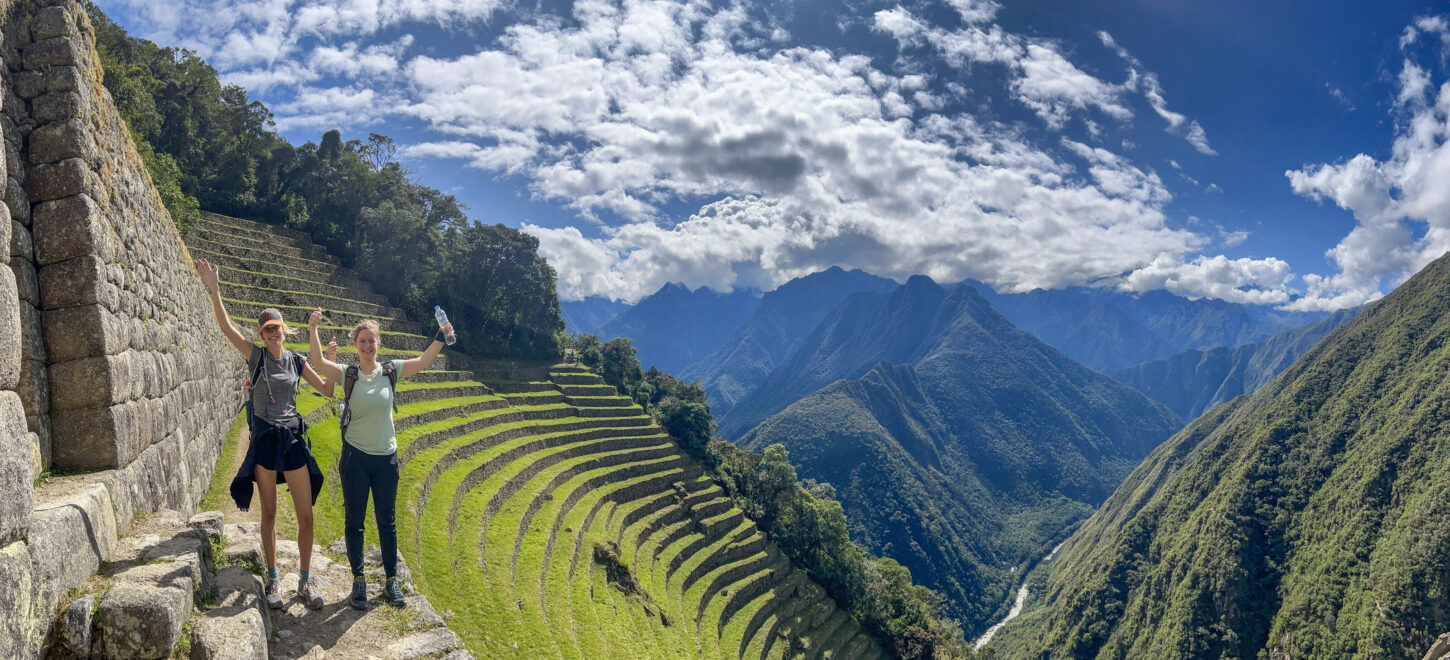For adventure enthusiasts seeking more hiking opportunities after reaching Machu Picchu, there are two popular and breathtaking options available: Huayna Picchu and Cerro Machu Picchu (Machu Picchu Mountain). Both hikes require permits and early morning starts for the ascent, so it’s essential to work with your tour operator to secure them prior to your arrival in Peru. While Huayna Picchu is the more popular choice, Machu Picchu Mountain is a fantastic alternative if permits for Huayna Picchu are sold out. Let’s explore each hike in more detail.
Huayna Picchu Also known as Wayna Picchu, Huayna Picchu is the mountain that envelops the Machu Picchu citadel, providing a striking backdrop to the mysterious city. Its name translates to “Young Peak” in the local Quechua language. The Incas constructed an original trail up the side of Huayna Picchu, and at its peak, they built temples and terraces. This mountain sits at an elevation of approximately 8,920 feet (2,719 meters) above sea level, and the hike takes around 1.5 to 2 hours round trip.
Legend has it that Huayna Picchu was once the site where high priests performed daily offerings and prayers to the Inca gods. Numerous ancient temples were nestled along its ridges. It is said that every morning before sunrise, a high priest would lead a small group on a walk to Machu Picchu, signaling the arrival of a new day.
The Temple of the Moon, one of the three major temples in the Machu Picchu area, rests on the mountainside and is situated at a lower elevation than Machu Picchu. Adjacent to the Temple of the Moon is the Great Cavern, another sacred temple with remarkable masonry.
Cerro Machu Picchu (Machu Picchu Mountain) Machu Picchu Mountain, meaning “Old Mountain” in Quechua, is the tallest peak behind the Inca citadel. This incredible hike takes approximately 4 hours round trip, starting from the Machu Picchu citadel, traversing the hidden Inca Trail beneath the forest, and reaching the summit of this remarkable mountain. Along the trail, you will encounter a diverse array of flora and fauna, including orchids, begonias, ferns, and exquisite hummingbirds. From the top, you can enjoy breathtaking views of the Machu Picchu citadel, the Urubamba River flowing below, and the sacred mountains that surround Machu Picchu.
This area is particularly fascinating as it lies in the high-cloud forest, where the highlands meet the rainforest, creating various micro-ecosystems. Machu Picchu Mountain holds special significance for the Incas as it serves as the confluence point for two rivers originating from the two most sacred Inca mountains. The Urubamba River flows from the south, originating in the Ausangate area, while the Aobamba River comes from Salkantay Mountain in the west. Due to this, Machu Picchu Mountain became a monument of reverence for the sacred waters.
Upon reaching the summit, hikers will be greeted by the Tawantinsuyo flag and a small shelter that provides respite from the sun and wind. From this vantage point, you can relish a 360° panoramic view of the Machu Picchu citadel and its surroundings.
Ascending to the top of Machu Picchu Mountain requires moderate climbing ability, as some sections can be steep but not considered dangerous. The hiking trail is well-maintained, consisting of a paved road with numerous steps, albeit with occasional zigzags. Embarking on this trek allows







